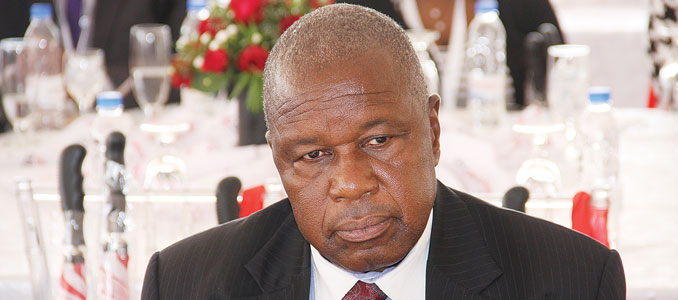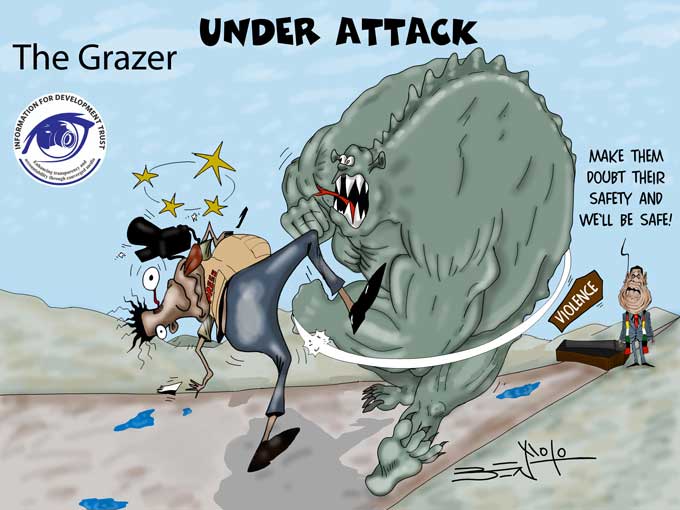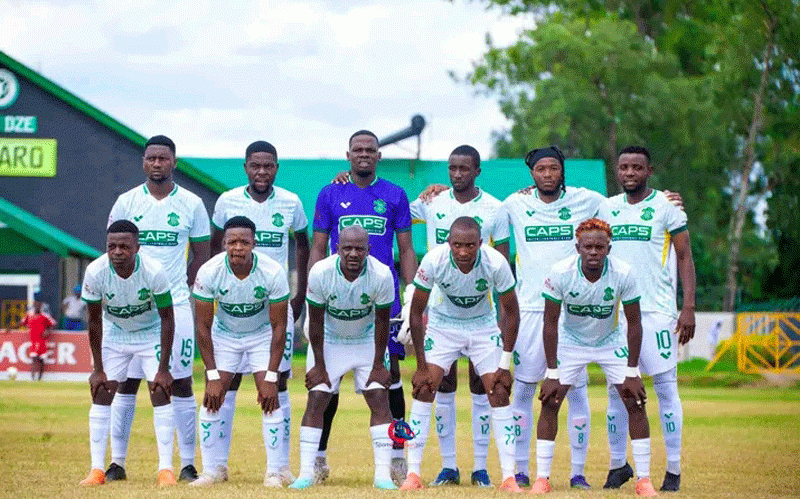
BY OWN CORRESPONDENT
In addition to the Covid- 2019 pandemic that swept through out the world, 2020 was marked by a further expansion of the American military presence around the world.
One of the reasons for the increase in United States military bases in various countries of the world is primarily the fight against terrorism.
But in fact, the main goals of the militaristic expansion of the Americans are to resist the growing domination of China and to protect US economic interests by military force, as it was before and will probably remain forever.
No one is surprised by the deployment of thousands of US troops and huge quantities of American weapons and military equipment in Europe, Southeast Asia and the Middle East.
But lately, the Pentagon is paying more and more attention to Africa.
In 2007 the United States Africa Command (Africom) was created and headquartered at Stuttgart, Germany. It is responsible for US military operations in Africa.
It was reported in June 2007 that African countries were competing to host the US Africa Command headquarters because it would bring money for the recipient country.
- Chamisa under fire over US$120K donation
- Mavhunga puts DeMbare into Chibuku quarterfinals
- Pension funds bet on Cabora Bassa oilfields
- Councils defy govt fire tender directive
Keep Reading
However, of all the African nations, only Liberia has publicly expressed a willingness to host Africom’s headquarters.
The US declared in February 2008 that Africom would be headquartered in German Stuttgart for the “foreseeable future”.
But in the summer of 2020, US Defense secretary Mark Esper directed Africom leadership to study a possible headquarters relocation outside of Germany.
In another development on November 20, the US army announced the consolidation of US Army Europe Command and US Army Africa Command into a single, four-star-led, Army Service Component Command (ASCC).
Consolidating the ASCCs enables increased agility and the ability to shift forces and assets from one war theater to another in order to support both US Africa and European commands.
In other words, the purpose of the unification of the commands is to create mechanisms for the lightning-fast transfer of American troops from Europe to Africa for military operations in the event of a threat to American interests on the continent.
The new command is called US Army Europe and Africa (USAREUR-AF) and all units assigned to US Army Africa will be reassigned to USAREUR-AF.
Recently promoted General Christopher G. Cavoli was appointed as the commander of the consolidated organisation. The consolidation is anticipated to be completed by the end of 2022.
These actions by the Pentagon indicate further plans to expand the US military presence on the African continent.
This is confirmed by an investigation published in May 2020 by the Mail & Guardian of South Africa.
Documents from the US military’s Africa Command obtained by the Mail & Guardian revealed ambitious plans to extend and reinforce a network of military bases and outposts across Africa.
The files detailed more than US$330-million of spending, including a list of “prioritised” military construction projects planned to be carried out from 2021 to 2025.
This is designated for infrastructure investments on US bases stretching across Africa. The files also suggested that Africom’s long-term planning extends for up to 20 years.
The formerly secret documentscountries 12 construction projects planned for four US outposts in three countries — Djibouti, Kenya and Niger — suggesting these efforts will continue in the years ahead.
Africom spokesperson John Manley told the Mail & Guardian through email that the projects detailed in the plans “continue on course and are in various stages of planning and/or execution”.
The Pentagon publicly claimed that the US has almost no physical footprint in Africa and has only one base on the continent – Camp Lemonnier in Djibouti.
But on any given day, about 6 000 US troops operate from some of the 27 outposts scattered across the northern tier of Africa. These include 15 “enduring locations” and 12 less permanent “contingency locations”, with the highest concentrations in the Sahel and the Horn of Africa.
“Strategic access to Africa, its airspace, and its surrounding waters is vital to US national security,” General Stephen Townsend, the commander of Africom, told the US Senate armed services committee in late January.
With these words, the American general once again confirmed the readiness of the United States to defend its political and economic interests by military force and to send military contingents to Africa not only to fight terrorists, but more to protect US’ own strategic facilities.
The largest number of US bases on the continent can be found in Niger. US troops are working with a larger Nigerien force under the umbrella of Operation Juniper Shield, a wide-ranging counterterrorism effort in northwest Africa.
Today, Juniper Shield continues: about 800 American servicemen operate from Niger and Oullam is one of six US outposts in the only country in West Africa with two “enduring” US bases.
One of them, Agadez, is the US’s key regional hub for air operations. And work for its expansion are planed for 2021 and 2022.
Djibouti is home to the crown jewel of US bases on the continent, Camp Lemonnier, the home, since 2003, of the US’ Combined Joint Task Force — Horn of Africa. Camp Lemmonier has long been a key hub for counterterrorism operations in Yemen and Somalia and it hosts about 4 000 US military personnel.
Since the US began operating there, Camp Lemonnier has expanded from 88 acres to nearly 600 acres and is the site of the bulk of Africom’s prioritised construction for the next five years, including seven projects totaling more than US$286-million.
Nearly US$34-million is also slated to be spent at the US outpost in Manda Bay, Kenya. The proposed additions include enhancements to the airfield’s runway, as well as improvements to housing, latrines and dining facilities to accommodate 325 personnel.
Earlier, another American information resource – The Smithsonian – published an analysis of US military operations abroad.
According to the publication, after the September 11, 2001 terrorist attacks on the United States, the Global War on Terrorism initiated by former president George W. Bush i became truly global, with Americans actively engaged in countering terrorism in 80 nations on six continents.
Contrary to what most Americans believe, the “war on terror” is not winding down—it has spread to more than 40% of the world’s countries.
The war isn’t being waged by the US military alone, which has spent US$1.9 trillion since 2001. The State Department has spent US$127 billion in the last 17 years to train police, military and border patrol agents in many countries and to develop antiterrorism education programmes, among other activities.
But foreign military training has not much of an effect at all. At one end of the spectrum, large-scale foreign training in Somalia, Iraq, or Afghanistan has been met with failure and frustration.
Jahara Matisek, an assistant professor in the Department of Military and Strategic Studies at the US Air Force Academy, has likened these foreign-trained forces to Fabergé eggs, “expensive and easily broken”.
According to The Conversation international edition, it is afact that a number of the officers involved in a coup d’état on August 18, 2020 in Mali had received foreign training, most notably from the United States.
In fact, this was the second time in eight years that US-trained officers in Mali had launched a coup. To paraphrase Oscar Wilde, to lose one civilian government to a coup launched by foreign-trained officers may be regarded as a misfortune; to lose two looks like carelessness.
For many commentators with a strong sense of déjà vu, events in Mali reinforce suspicions of a link between US training and coup d’états.
The investigation, conducted by The Intercept edition also provides data on 29 US military bases located in 15 different countries or territories, with the highest concentrations in the Sahelian states on the west side of the continent, as well as the Horn of Africa in the east.
The documents note, however, that Africom is actively seeking to enhance its presence and is primed for expansion in the future.
And it is the fact that violent extremism and insecurity in Africa has increased exponentially during the very years that the US has been building up its network of bases, providing billions of dollars in security assistance to local partners, conducting persistent counterterrorism operations that include commando raids, combat by US special operations forces in at least 13 African countries between 2013 and 2017, and a record number of U.S. airstrikes in Somalia (just over one attack per week in 2019).
There are now roughly 25 active militant Islamist groups operating in Africa, up from just five in 2010 — a jump of 400% — according to the US Defense Department’s Africa Center for Strategic Studies.
Militant Islamist activity also hit record levels. There were 3,471 reported violent events linked to these groups that year, a 1,105% increase since 2009.
Reported fatalities resulting from African militant Islamist group activity also increased by 7% over last year, to an estimated 10,460 deaths.
A recent US Defense Department’s Inspector General’s (DoDIG) report, examining US counterterrorism efforts in Africa, raises serious questions about the utility of billions of tax dollars spent on US bases, operations, and assistance to local partners.
Even after a decade-plus spent fighting militants in Somalia, “the threat posed by al-Shabaab and ISIS-Somalia in East Africa remains ‘high,’ despite continued US airstrikes and training of Somali security forces,” the Defense Intelligence Agency told the Defense Department’s Inspector General.
The DoDIG further noted that al-Shabab not only “remains a potent threat” due to its “ability to conduct high-profile attacks, recruit fighters, and finance ongoing operations,” but that the group “appears to be a growing threat to US personnel and interests in the region.”
The DoDIG’s assessment of West Africa was even more dire. “Violent extremist organisations (VEOs) violence in West Africa grew rapidly over the past two years; in Burkina Faso, Mali, and Western Niger, VEO violence increased by 250 percent since 2018,” according to the report.
Africom told the DoDIG that security in West Africa continued to deteriorate as terrorist groups “launched a growing number of offensive attacks against military facilities and troops … often resulting in large numbers of casualties” to U.S.-allied armed forces. “VEOs in West Africa are not degraded nor contained to the Sahel and Lake Chad region,” the command admitted.
Now the US military claim about its readiness to provide assistance to Mozambique and Washington is seriously interested in a partnership with Maputo to stop armed groups in Cabo Delgado province.
So, based on the experience of the Americans providing “assistance“ to other countries, the scenario of Somalia, Libya, Niger, Mali, Chad and many other states can be seen in Mozambique in the near future.
In case of U.S. intervention, instead of stabilizing the situation in Mozambique, we will see only fire, blood, activation and growth in the number of terrorists and an increase in civilian casualties.










